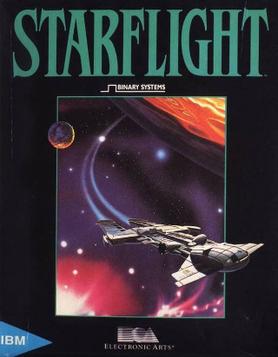
Starflight is a space exploration, combat, and trading role-playing video game created by Binary Systems and published by Electronic Arts in 1986. Originally developed for IBM PC compatibles, it was later ported to the Amiga, Atari ST, Macintosh, and Commodore 64. A fully revamped version of the game was released for the Sega Genesis in 1991.
A sports video game is a video game that simulates the practice of sports. Most sports have been recreated with video games, including team sports, track and field, extreme sports, and combat sports. Some games emphasize playing the sport, whilst others emphasize strategy and sport management. Some, such as Need for Speed, Arch Rivals and Punch-Out!!, satirize the sport for comic effect. This genre has been popular throughout the history of video games and is competitive, just like real-world sports. A number of game series feature the names and characteristics of real teams and players, and are updated annually to reflect real-world changes. The sports genre is one of the oldest genres in gaming history.

Starflight 2: Trade Routes of the Cloud Nebula is a 1989 science fiction video game developed by Binary Systems and published by Electronic Arts as the sequel to the successful Starflight. It features a combination of space exploration, role-playing and strategy within a futuristic setting. The player commands a spaceship capable of traveling to the game world's 150 solar systems, communicating with or attacking other spaceships, and landing on planetary surfaces which may be explored with a crewed rover for plot clues, minerals and alien lifeforms. Game mechanics and the overall look and feel closely resemble the earlier Starflight game, but many new features are introduced including an interstellar trade-based economy, new sentient alien races, and new spacecraft accessories and artifacts. The player is tasked with discovering the ultimate source of the advanced spacecraft technology and unlimited fuel supply which provide a military advantage to the Spemin, a hostile alien race threatening to annihilate or enslave humanity. A major part of the game consists of earning enough money to pay for spaceship upgrades and crew training by engaging in interstellar trade and barter with various alien cultures at their planetary trading posts.
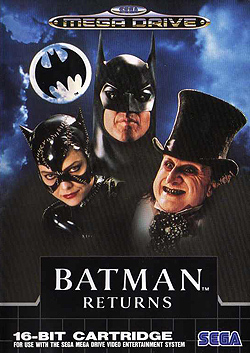
Batman Returns is the name of several video games for various platforms based on the 1992 film of the same name.

Kung-Fu Master, known as Spartan X in Japan, is a side-scrolling beat 'em up game developed by Irem as an arcade game in 1984, and distributed by Data East in North America. Designed by Takashi Nishiyama, the game was based on Hong Kong martial arts films. It is a loose adaptation of the Jackie Chan, Sammo Hung, and Yuen Biao film Wheels on Meals (1984), called Spartan X in Japan, with the protagonist Thomas named after Jackie Chan's character in the film. The game is also heavily inspired by the Bruce Lee film Game of Death (1972), which was the basis for the game's concept. Nishiyama, who had previously designed the side-scrolling shooter Moon Patrol (1982), combined fighting elements with a shoot 'em up gameplay rhythm. Irem and Data East exported the game to the West without the Spartan X license.
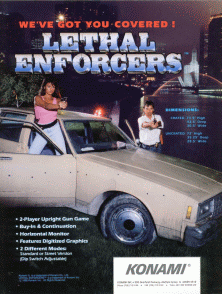
Lethal Enforcers is a 1992 light gun shooter released as an arcade video game by Konami. The graphics consist entirely of digitized photographs and digitized sprites. Home versions were released for the Super NES, Genesis and Sega CD during the following year and include a revolver-shaped light gun known as The Justifier.
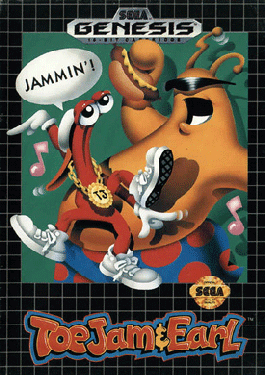
ToeJam & Earl is an action game developed by Johnson Voorsanger Productions and published by Sega for the Genesis console. Released in 1991, it centers on ToeJam and Earl—alien rappers who have crash-landed on Earth. As they attempt to escape the planet, players assume the role of either character and collect pieces of their wrecked spacecraft. It references and parodies 1980s and early 90s urban culture and is set to a funk soundtrack. ToeJam & Earl's design was heavily influenced by the role-playing video game Rogue (1980) and derived various features from the game, such as the random generation of levels and items. As such, ToeJam & Earl is often considered to be an example of a roguelike game.

Yie Ar Kung-Fu is an arcade fighting game developed and published by Konami. It first had a limited Japanese release in October 1984, before having a wide release nationwide in January 1985 and then internationally in March. Along with Karate Champ (1984), which influenced Yie-Ar Kung Fu, it is one of the games that established the basis for modern fighting games.

The Menacer is a light gun peripheral released by Sega in 1992 for its Sega Genesis and Sega CD video game consoles. It was created in response to Nintendo's Super Scope and as Sega's successor to the Master System Light Phaser. The gun is built from three detachable parts, and communicates with the television via an infrared sensor. The Menacer was announced at the May 1992 Consumer Electronics Show in Chicago and was released later that year. The gun was bundled with a pack-in six-game cartridge of mostly shooting gallery games. Sega also released a Menacer bundle with Terminator 2: The Arcade Game.
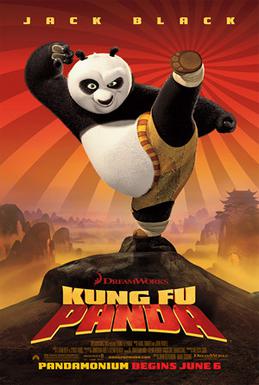
Kung Fu Panda is a 2008 American animated martial arts comedy film produced by DreamWorks Animation and distributed by Paramount Pictures. The first installment in the Kung Fu Panda franchise, it was directed by John Stevenson and Mark Osborne in their feature directorial debuts, and written by Jonathan Aibel and Glenn Berger from a story by Ethan Reiff and Cyrus Voris. The film stars the voices of Jack Black, Dustin Hoffman, Angelina Jolie, Ian McShane, Seth Rogen, Lucy Liu, David Cross, Randall Duk Kim, James Hong, Dan Fogler, Michael Clarke Duncan and Jackie Chan. The film, set in a version of ancient China populated by anthropomorphic animals, centers on a bumbling panda named Po (Black), a kung-fu enthusiast. When a notorious snow-leopard named Tai Lung (McShane) is foretold to escape at Chorh-Gom Prison, Po is unwittingly named the "Dragon Warrior", a prophesied hero worthy of reading a scroll that has been intended to grant its reader limitless power.
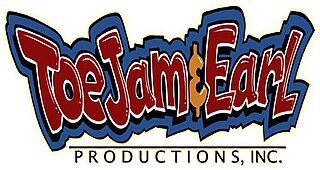
ToeJam & Earl Productions, Inc. (1989–2003) was an American video game company founded by Electronic Arts developers Mark Voorsanger and Greg Johnson. Their best-known titles were Orly's Draw-A-Story, and three games in the ToeJam & Earl series.

Art Alive! is a paint program released by Sega for the Sega Mega Drive and Sega Genesis in 1991.

Erin Hoffman is an American game developer, blogger, and fantasy writer. She has published three fantasy novels, and been the lead designer on multiple games such as Kung Fu Panda World, GoPets: Vacation Island, and Frontierville. Her anonymous post as a disgruntled "EA Spouse" in 2004, based on the working conditions of her husband who was an Electronic Arts developer, led to industry-wide awareness of the frequent use of "crunch time" overtime work to complete games in the video game industry.
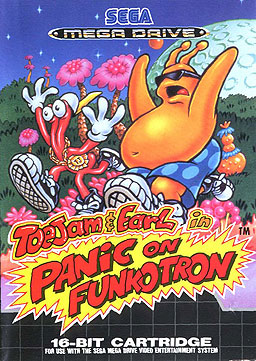
ToeJam & Earl in Panic on Funkotron is a platform video game developed by Johnson Voorsanger Productions and published by Sega in 1993 for the Sega Genesis. The game is the sequel to cult video game ToeJam & Earl, released in 1991. The game concerns two alien protagonists, ToeJam and Earl, both of whom have escaped from Earth, where they had crash landed. After returning to their home planet of Funkotron, the duo discover a number of antagonistic Earthlings have stowed away on the spacecraft and are wreaking havoc across the planet. The player must hunt down these Earthlings and imprison them in jars before sending them back to Earth.
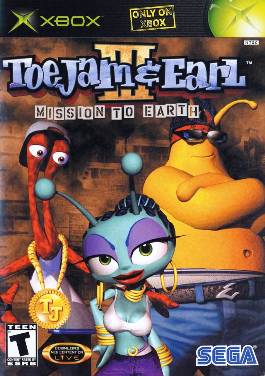
ToeJam & Earl III: Mission to Earth is an action video game released for the Xbox on October 22, 2002. Developed by ToeJam & Earl Productions and Visual Concepts, and published by Sega, it is the third installment in the ToeJam & Earl series. Players assume the role of one of three extraterrestrial protagonists: ToeJam and Earl, who starred in the series' first two games, and Latisha, a new character. While using power-ups to combat enemies, players seek to collect the twelve "Sacred Albums of Funk" and defeat the antagonistic "Anti-Funk."

Supreme Warrior is a full-motion video (FMV) beat 'em up game developed by Digital Pictures. It was released for the 3DO Interactive Multiplayer and Sega CD in November 1994 in North America and in early 1995 in Europe, with subsequent releases in 1995 for the 32X, Macintosh, and Windows. The game is themed as a kung fu film where the player has to fight off opponents to protect half of a magical mask.

M2 Co., Ltd. is a Japanese video game developer and publisher, best known for handling emulation of re-released games, such as some Sega Ages titles, Virtual Console titles for Nintendo systems, the 3D Classics series for the Nintendo 3DS and their ShotTriggers range of classic STG games. M2 has also created entirely new titles such as WiiWare games for Konami under the ReBirth moniker and more recently a new GG Aleste game. In addition, M2 currently holds the rights of Aleste series and all NEC Avenue and NEC Interchannel games on TurboGrafx-16 and variants, previously owned by Lightweight.
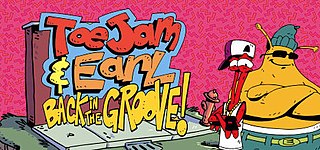
ToeJam & Earl: Back in the Groove is the fourth entry in the ToeJam & Earl series of video games. The game was developed by HumaNature Studios, founded by series creator Greg Johnson, and published by the studio on March 1, 2019.

Evan Wells is an American video game designer and programmer and co-president of Naughty Dog. Wells' first video game was at Sega, where he worked on ToeJam & Earl in Panic on Funkotron, before moving to Crystal Dynamics in 1995 to work on Gex and Gex: Enter the Gecko. He was employed at Naughty Dog in 1998, working on several Crash Bandicoot and Jak and Daxter titles before becoming co-president of the company alongside Stephen White in 2005; White was replaced the following year by Christophe Balestra, who retired in 2017. The two oversaw the release of the Uncharted series, and The Last of Us. Wells remained the sole president, overseeing the release of The Last of Us Part II, until Neil Druckmann's promotion to co-president in 2020. Wells announced his retirement in 2023.


















